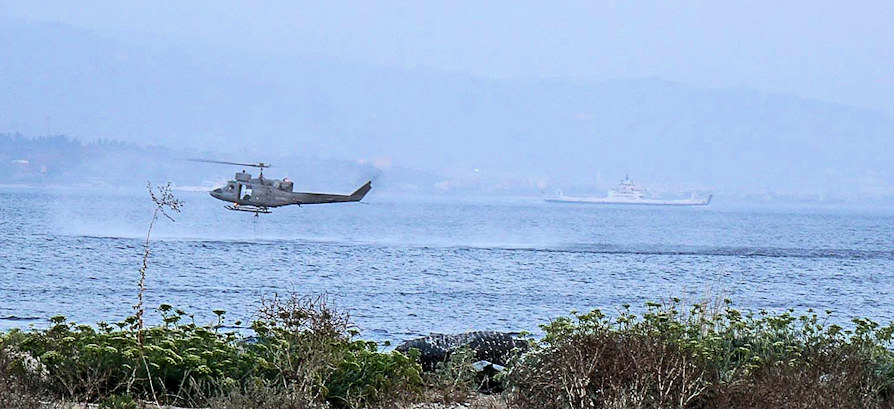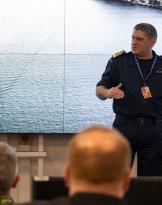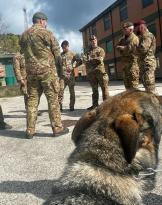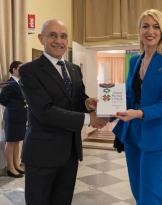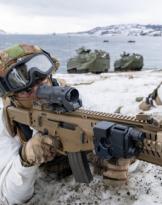In addition to their operational functions, the Navy Air Forces also carry out significant cooperation activities in favor of the Fire Department, Public Rescue and Civil Defense Department, especially on the occasion of the campaign to fight forest fires.
This support is based on an agreement signed between the Ministry of Defense and the Department of Civil Protection and sees the Armed Force, like the others, make air vehicles and bases available to the community which, in the period from June to September , guarantee daily two crews ready to take off in a very short time from the mission order.
Navy ships and aircraft can intrinsically express dual capabilities for use not only for military purposes but also for the benefit of the community. They are entrusted with tasks which, by their nature, are strictly connected to the civil world, in the articulated and complex context of the maritime environment, but not only.
The ability to provide a contribution of public utility and environmental protection, which goes beyond the purely institutional tasks related to the defense of the State, is expressed in the interventions that the Navy helicopters are carrying out in these days in the context of Forest Firefighting Campaign (CAIB).
In fact, also for 2017, the AB-212s of the second and fourth Helicopters Group, which operate respectively from the Catania and Grottaglie (TA) air stations, support the Civil Protection and the Fire Brigade of Sicily, Puglia and neighboring regions in the fight against forest fires.
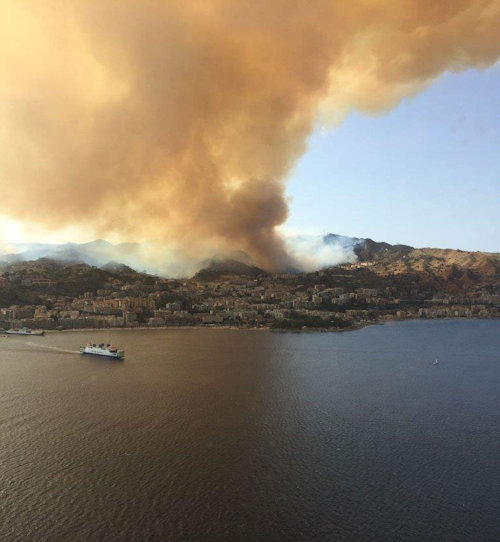 Received the request for intervention from Unified Air Operations Center (COAU) of theEmergency Management Office of the Civil Protection, the Command in Chief of the Naval Team (CINCNAV), which exercises the operational control of the aircraft, evaluated the situation, arranges the use of the alarm crew, ready for take-off within two hours of the order, which, planned mission and completed pre-flight checks, direct as quickly as possible to the action scene.
Received the request for intervention from Unified Air Operations Center (COAU) of theEmergency Management Office of the Civil Protection, the Command in Chief of the Naval Team (CINCNAV), which exercises the operational control of the aircraft, evaluated the situation, arranges the use of the alarm crew, ready for take-off within two hours of the order, which, planned mission and completed pre-flight checks, direct as quickly as possible to the action scene.
Once in the area, having established the radio connection with the Director of Shutdown Operations (DOS), the crew receives the information and instructions necessary to proceed with the reconnaissance of the fire and the surrounding area, and then start the activities of " attack "on the fire. All this, however, not before having identified the sources of water supply, be they the sea, lakes or even ponds and artificial basins.
In carrying out a firefighting mission, the pilots and flight operators of the Air Force of the Navy put into practice experience and competence in low-altitude flight, necessary for an effective intervention on the flames typical of operations in a hostile environment, to which is added the fundamental knowledge of forest fire intervention techniques.
The suppression of the fire takes place using a particular container, the "bambi bucket", commonly called "bucket", which, hooked to the lower part of the helicopter's fuselage, allows to load and release up to 500 liters of water at a time.
To date, as part of the 2017 CAIB, the Second and Fourth Helicopter Groups have already carried out more than 30 firefighting missions, totaling over 70 flight hours and 350 "wells".
In the last fifteen years, however, approximately 1.200 missions have been carried out for over 2.700 flight hours.
